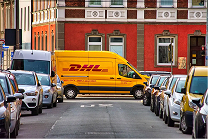Top Logistics Companies In Singapore (+Tips For Choosing One!)
Looking for a logistics company in Singapore? You’ve found the right place! This article rounds up a list of top logistics companies in Singapore.

On average, Amazon FBA sellers see a 30% reduction in shipping costs, and a 20-25% increase in sales, according to Amazon.
The online marketplace, of course, wants to paint a fanciful picture where its FBA services help merchants cut costs and boost revenue, hence achieving a win-win situation for both the sellers and the platform itself.
FBA refers to Fulfillment By Amazon. It’s an order fulfillment service provided by Amazon for e-commerce sellers.
Here’s how FBA works. As an online seller, you’ll provide products and ship them to Amazon’s fulfillment centers for storage. When you make a sale on Amazon, it helps you deliver those goods to customers.
In other words, Amazon takes care of most steps along the e-commerce fulfillment process, including inventory storage, order packing, shipping, return processing and even customer support.
Before deciding whether to use Amazon’s FBA services, many sellers like to survey the FBA landscape and see whether their competitors are doing the same.
So how many Amazon sellers are there? How many of them use FBA to sell? And what are the benefits of FBA? We’ve gathered the answers for you.
Globally, there are around 9.5 million Amazon sellers.
While Amazon hasn’t yet disclosed the latest statistics, estimates are that 70-90% of sellers now use FBA to sell. In other words, around 7.6 million to 8.6 million merchants use FBA.

The reason lies in Amazon Prime.
The past decade was revolutionary. The ways that people shop have changed drastically, and so have Amazon’s services. As customer expectations continue to reach new heights, Amazon now offers same-day or two-day shipping for its Prime customers.
But why is this relevant to the popularity of FBA? That’s because you can become an Amazon Prime seller by using FBA. Your product listing will then receive a Prime badge, with priority ranking on the marketplace.
Getting a Prime badge allows you to reach over 300 million Prime customers, who order exclusively from Prime sellers. Higher ranking on the platform also means greater visibility and potentially more sales.
Now you know that a vast majority of Amazon sellers use FBA, and you can get Prime status by using the FBA service.
The next question is, should you follow the crowds? Is Amazon FBA still worth it in 2022?
Let’s not fall victim to herd mentality, but guide our decision with figures and rationality. Below are some questions and statistics that will help us decide whether Amazon FBA is worth it.

Most Amazon sellers earn a monthly revenue of $500 to $5,000, but some super-sellers make more than $100,000 per month, according to a survey by Jungle Scout.
That said, it’s worth noting that selling on Amazon is only a side hustle for most merchants — just one-fifth (21%) of sellers say that Amazon is their only source of income.
Nearly half (45%) of sellers earn more than $50,000 in their lifetime, according to the Jungle Scout survey.
Given that selling on Amazon is only a side hustle for most merchants, this amount of lifetime income is pretty impressive.

Most Amazon merchants (65%) are selling with a healthy profit margin of 11% or above, the same survey found.
Among this group of merchants, around one-third (32%) achieve a profit margin of 20% or more.

Yes, Amazon FBA is worth it.
It helps you gain Prime status on the platform, outsource the e-commerce fulfillment process, and earn extra income for yourself.
Need a little nudge to start building your business on Amazon? Think about the lucrative profit margins, extra money in your bank account, and the millions of merchants who make more than $50,000 just by selling on the platform.
When kicking start an Amazon FBA business, many merchants face the same issue — having their money tied up in inventory.
This is because Amazon requires sellers to keep their goods in designated fulfillment centers, meaning that you’ll have to buy inventory in bulk before you make any money from sales.
As a result, money is locked in your inventory, and you can’t spend it elsewhere (e.g. marketing and advertising) to grow your business.
To overcome short-term cash flow gaps, inventory financing used to be a popular option for getting extra working capital.
However, as the business financing landscape evolves and new forms of funding emerge, many digital merchants today find revenue-based financing (RBF) a better alternative. Here’s why.
Although revenue-based financing is a relatively new concept in Asia, it has roots in the Western world as a popular business financing method.
Known for its flexibility in multiple aspects, revenue-based financing is the go-to option of many fast-growing businesses, especially digital merchants, to bridge their cash flow gaps, increase working capital and finance inventory purchases.
Interested in learning about revenue-based financing for e-commerce businesses? Check out our blog or apply for funding now!
Grow your business with Choco Up

Looking for a logistics company in Singapore? You’ve found the right place! This article rounds up a list of top logistics companies in Singapore.

Understand the difference between growth and scaling in business. Learn when to focus on each and how to achieve sustainable success.